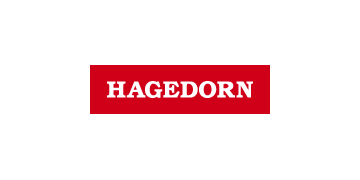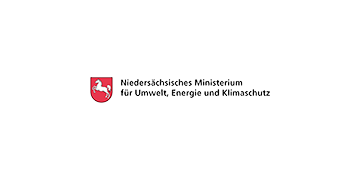| Theme | XXL products, Ecology |
|---|---|
| Project title | Model based development of disassembly network design for large-scale products (DemoNetXXL) |
| Project duration | 01.01.2016 – 31.12.2017 |
| Video | |
| Download |
|
| Press release |
Disassembling of large-scale products (XXL-products such as wind energy plants, crane and conveyor systems) shows special requirements due to the dimensions of the product and the complexity of the components. The first step of the disassembling starts usually at the operation site. The challenge for disassembling companies is the positioning between expensive dismantling at the job site and the costly transportation of modules to a disassembling factory. Within the framework of this research project this location and allocation problem will be pictured in a model. For solving this problem time efficiently, a heuristic based on genetic algorithms will be used. The result should give companies the opportunity to arrange disassembling networks for XXL-Products efficiently.
Publications about the project
The dismantling of wind turbines is gaining in importance. The reasons for this are the expiry of feed-in tariffs for a large part of the German plant stock as well as the technical and economic end-of-life of wind farms. Operators and dismantling companies are faced with the challenge of organizing the dismantling process efficiently. There is a conflict of objectives between the positioning of the complex and expensive dismantling at the site of operation and the expensive transport of components of a wind turbine that are not further dismantled to a dismantling factory where a more cost-effective dismantling is possible. In the research work, the most important factors influencing disassembly are summarized in an impact model and transferred into a mathematical model. The mathematical model is based on a site planning and allocation problem for wind turbine disassembly. By applying the model to a framework scenario and conducting a parameter study, recommended actions for the individual components in the dismantling of a wind turbine are developed. In addition to the allocation of dismantling tasks to dismantling sites, these also included recommendations for action with regard to dismantling planning and documentation.
Wind energy, dismantling, site planning and allocation problem, dismantling networks
More and more players in the German wind energy sector are concerned with the question of how to deal with the aging German wind fleet, as around 5,200 turbines will simultaneously reach the end of the feed-in tariff funding period of the Renewable Energy Sources Act (EEG) for the first time at the end of 2020. Around 8,000 wind turbines will follow by the end of 2025, as shown in Figure 1. Operators of affected wind turbines will then have the choice between (I) continuing to operate the old turbine within the framework of direct marketing on the European Power Exchange, (II) repowering the old turbine by a new and more efficient wind turbine at plant-specific feed-in premium levels tendered in the German renewable energy auctions or (III) decommissioning the respective plant finally.
However, the question of choosing the right option arises not only for the operators themselves, but also for various other players in the wind energy sector:
Project developers, turbine manufacturers, and investors are interested in evaluations of plant-specific repowering potentials in the existing wind turbine fleet in order to provide operators with targeted support in implementing new projects; dismantling contractors and disposal companies particularly search for derivatives of plant-specific dismantling potentials and the associated disposal and recycling flows in order to enable optimal handling of the comprehensive dismantling processes; and regional as well as supra-regional public and political institutions are interested in estimates of changes to the installed wind energy capacity in order to enable optimal control of future capacity expansion under consideration of societal, economic and political aspects.
dismantling, wind turbine
At the end of 2020, around 6,000 wind turbines will simultaneously fall out of the 20-year subsidy under the Renewable Energy Sources Act (EEG) for the first time. Around 8,000 further wind turbines will follow by the end of 2025. Operators of affected wind turbines will then have the choice between continuing to operate the old turbine at the significantly lower spot market prices of the European Power Exchange (EPEX), operating a new and more efficient wind turbine at the site of the old turbine (repowering) at auctioned conditions or finally decommissioning it. Quo vadis 20 years old Wind trubines? Scientists from the Institut für Integrierte Produktion Hannover (IPH) have therefore been working on the "DemoNetXXL" project, funded by the German Research Foundation (DFG), in cooperation with the Institute for Information Systems at Leibniz University Hanover on the selection and design of optimal post-utilisation strategies for wind power plants.
wind turbines, plants repowering, post-use strategies, dismantling
In average, more than 1,275 wind turbines were installed annually since 1997 in Germany and more than 27,000 wind turbines are in operation today. The technical and economic life time of wind turbines is around 20 to 25 years. Consequently, dismantling of aging wind turbines will increase significantly in upcoming years due to repowering or decommissioning of wind farms and lead to millions of costs for operators. An option to supersede the costly and time-consuming dismantling of wind turbines entirely on-site is to establish a dismantling network in which partly dismantled wind turbines are transported to specialized dismantling sites for further handling. This network requires an optimization model to determine optimal locations and an appropriate distribution of disassembly steps to dismantling sites. The challenge is to consider the networks dependency on the trade-off between transportation and dismantling costs which, in turn, depends on the selection of dismantling depths and sites. Building on the Koopmans-Beckmann problem, we present a mathematical optimization model to address the described location planning and allocation problem. To permit a proof-of-concept, we apply our model to a case-study of an exemplary wind farm in Northern Germany. Our results show that the model can assist dismantling companies to arrange efficient dismantling networks for wind turbines and to benefit from emerging economic advantages.
dismantling, wind turbine, optimization model
Wind turbines can withstand more load changes than bridges or helicopters - but at some point they, too, have had their day. Operators of wind turbines should therefore consider their options for continued operation, repowering or complete dismantling before the end of the approved operating period. Together with practical partners, the Institut für Integrierte Produktion Hannover (IPH) gGmbH is researching how dismantling can be carried out quickly, cost-effectively and in an environmentally friendly manner. The project "Development of an impact model for the efficient design of dismantling networks for XXL products" is funded by the German Research Foundation (DFG).
dismantling, wind turbine
Thousands of wind turbines need to be dismantled and replaced in the next years. The owners of the wind parks have to pay millions to handle this. How you can dismantle quickly, at a low price and ecologically friendly, is part of a research project of the Institut für Integrierte Produktion Hannover (IPH). The huge dismantling wave will start in the next years.
dismantling networks, wind turbines
Disassembling of large-scale products (e. g. wind energy plants, crane and conveyor systems which are known as XXL-Products) becomes increasingly important, as the operating time is limited. The challenge is to optimize the positioning of the complex and expensive disassembling on the operation site on the one hand and the costly transportation of modules to the disassembling factories. For this reason the location and allocation problem will be pictured in a mathematical model within the research project “DemoNet”. This model supports companies to create a XXL-disassembly-network. The research hypothesis assumes: a disassembly under ecological, economical and logistical aspects constitutes the optimum. The extension of a location planning tool forms the basis of the mathematical optimization model for the disassembly of XXL-Products. For solving the problem a genetic algorithms will be used. The result helps companies to arrange disassembling networks for XXL-Products efficiently.
dismantling planing, dismantling networks, impact model












